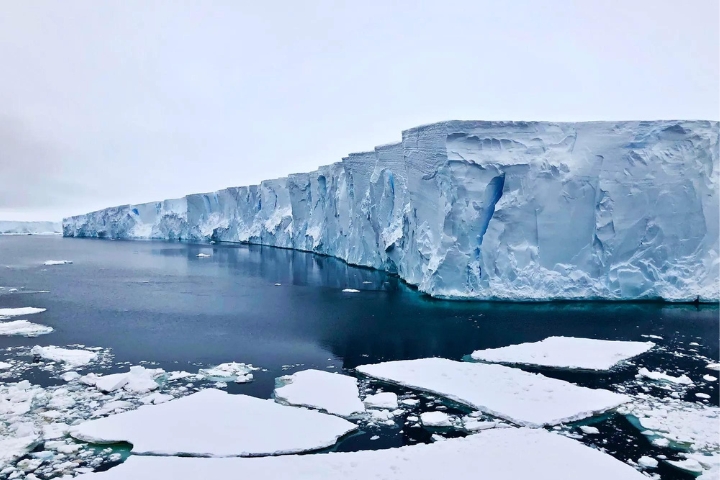The Thwaites Glacier, ominously dubbed the “Doomsday Glacier” due to its alarming proximity to collapse, is on the verge of triggering a significant surge in sea levels.
Recent research has provided valuable insights into the anticipated timeline for the glacier’s potentially imminent demise, shedding light on the urgency of addressing this critical environmental issue.
Thwaites Glacier could cease to exist completely by the 23rd century
Researchers from the British Antarctic Survey (BAS) surveyed the glacier with underwater robots as part of a new investigation. According to their calculations, the Thwaites Glacier, which is about 120 km (or 74.5 miles) in extent, may fully disappear by the 23rd century.
In addition, a sizable portion of the West Antarctic Ice Sheet may disappear, raising the possibility of dangerous global sea level rise.
According to the study, if it does entirely disappear, sea levels might increase by two feet (65 cm), submerging vast swathes of the continent.
The world’s widest glacier, equivalent to Great Britain or Florida, is over 6,500ft thick, 2.5 times the size of Dubai’s Burj Khalifa. It is in danger of melting away, but the exact timeline is not clear.
Dr Rob Larter, a marine geophysicist at BAS said “There is a consensus that Thwaites Glacier retreat will accelerate sometime within the next century.”
Recent studies suggest that Thwaites Glacier and other glaciers have experienced a significant increase in water flow, with the amount of water flowing from the glacier more than doubled from the 1990s to the 2010s.
Thwaites has been categorized as “exceptionally vulnerable”
Dr Ted Scambos, ITGC’s US science coordinator and a glaciologist at the University of Colorado, said “It’s concerning that the latest computer models predict continuing ice loss that will accelerate through the 22nd century and could lead to a widespread collapse of the West Antarctic Ice Sheet in the 23rd,”
Researchers have classified Thwaites as “exceptionally vulnerable” due to its ice’s location on a bed below sea level, which slopes towards the heart of West Antarctica.
Sea levels could rise by two feet (65 cm) if the Thwaites glacier collapses, but the situation for the West Antarctic Ice Sheet as a whole is far more dire.
In the event that the latter likewise completely disappears, sea levels will increase by an astounding 10.8 feet (3.3 meters).
Scholars are advocating for prompt action to address greenhouse gas emissions, which are a primary cause of Thwaites melting.





GIPHY App Key not set. Please check settings